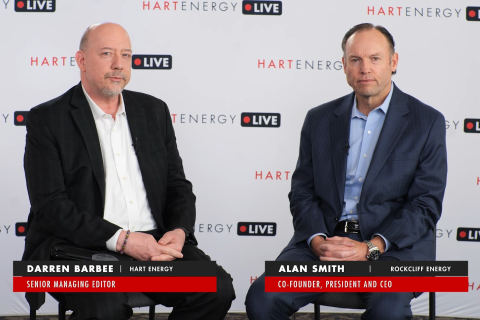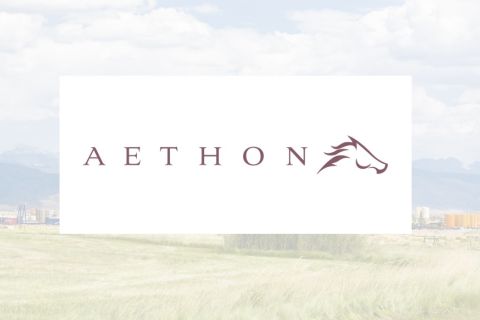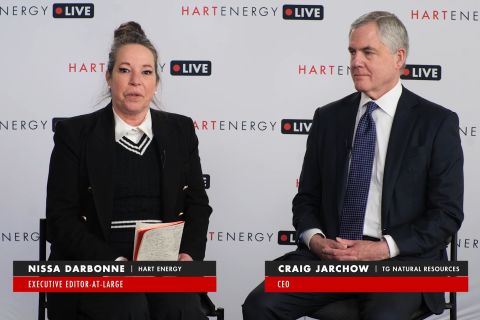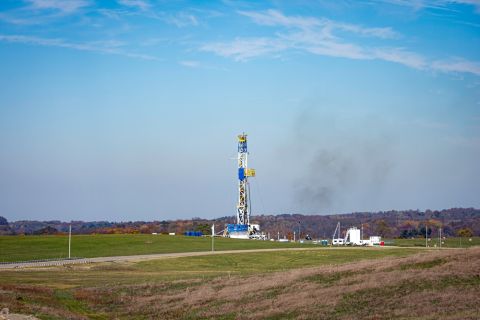Headquartered in Denmark, DONG Energy considers itself to be one of the leading energy groups in Europe. S?ren Gath Hansen, DONG Energy’s executive vice president in charge of Exploration & Production, refers to DONG as “an integrated energy company.”
DONG is the result of a merger among several large players in the Danish energy sector. “In 2005, we had several separate power producing companies, an E&P and gas transmission and wholesale company, and several distribution companies, which we merged into one joint company,” Gath said.
Today the company has more than 6,000 employees and is continuing to grow. Danish 76% state-owned DONG had annual revenues in 2010 equaling US $10 billion (6.3 Bn GBP) with earnings of $2.5 billion (1.6 Bn GBP). In a Danish context, DONG is among the three largest companies in the country. On an international level, the company is classified as small to medium size.
According to Gath, DONG is working to expand its portfolio both as a major European utility player and as an E&P company. “Originally, power generation was based on coal-fired plants,” he said. “We are now changing that to natural gas and biomass to decrease CO emissions overall. In 2006, we set a target to reduce our COemission per MWh by 50% in 2020, and we are already ahead of our plan to reach this target. We are also a world leader in offshore wind energy with significant investments in Denmark, Germany, and especially UK,” Gath said.
As DONG continues to invest in its utilities arm, the company also plans to expand its E&P offering. The company operates across the Danish and Norwegian continental shelves and is the largest license holder in the West of Shetlands, with recent discoveries including Glenlivet, Laggan, Tormore, Edradour, Rosebank, Cambo, and Tornado.
At the end of 2010, DONG Energy held 73 licenses in Northern Europe: 13 production licenses, 11 under development, and 49 exploration and appraisal licenses. DONG Energy operates 10 licenses in Denmark, seven in Norway, eight in the UK, and one in Greenland.
“DONG is a mixture of E&P and utility,” said Gath. “We have seen better results in the first half of 2011 than the same period in 2010, which was our best year to date, outperforming most of our peers,” he added.
Of the revenue for 1H 2011, 34% of the earnings came from DONG’s E&P sector. “Part of our success is because we have changed our strategy to strengthen our E&P efforts while increasing our focus on green energy as well,” Gath said. “In coming years, DONG’s E&P development will increase in addition to adding more wind and biomass power generation to our mix,” he said. The company is heavily invested in several wind farms that will come online within the next two to three years.

S?ren Gath Hansen, DONG Energy’s executive vice president, E&P: “Part of our success is because we have changed our strategy to strengthen our E&P efforts.” (Image courtesy of DONG Energy)
From partner to producer
DONG’s energy growth strategy was marked by several significant events in the past 12 months. The Nini East field on the Danish shelf was put into production, followed by the Norwegian Trym field at the beginning of 2011.
Exploration for new reserves has resulted in two discoveries, one in the Solsort license in the Danish sector of the North Sea operated by DONG E&P and one in the Edradour license in the UK sector in which DONG E&P is partnering with Total, the operator. In 2010, DONG E&P participated in investment decisions to develop the Laggan-Tormore licenses in the UK North Sea and Marulk in the Norwegian Sea, and it is initiating further development of the Syd Arne field offshore Denmark. The company also has been awarded a new West Greenland license, three in the UK, and one in Norway.
“We have a well diversified portfolio comprising assets in mature areas in the Southern Norwegian and Danish North Sea, assets with fresh new production in Mid-Norway, assets in growth areas such as West of Shetlands, and frontier areas such as the Barents Sea and Greenland,” Gath said. The company’s strategy has been to focus on these areas: “We know the political systems, we know the business culture, and, we know the subsoil,” he said.
Gath believes there is good value in partnering with larger operators. “We always play an active role in projects because we are learning at every phase and believe that we can contribute in a value-creating way,” he said. DONG is currently one of the largest holders in the West of Shetlands. “We set out a long-term strategy,” Gath said. In 2000, the company made the decision to get into the West of Shetlands when few people believed in the area’s potential. “We wanted to fully understand the region. We wanted to be ‘basin masters’ who understood all the plays in the area,” he said. The company has managed to break the code in the West of Shetlands and has participated in nine discoveries in the area since 2000.
“Our primary objective for all of our operations is to develop and understand the subsoil in a particular region and make a difference with this applied knowledge,” Gath said.
Although some of the company’s assets could be considered “mature” fields, many have years of production ahead.
“The Siri area, for example, was estimated to contain 50 MMbbl when production started in 1999. We’ve produced 110 MMbbl and still expect to have about 10 more years of strong production left,” Gath said.
The recent Solsort North Sea discovery shows that the Danish sector still has viable prospects to be discovered.
DONG has increased its operating potential through a variety of successful partnerships with larger, more experienced operators. In the mid-Norwegian North Sea, DONG holds a 10.3% interest in the landmark Ormen Lange development project. The field, which is 40 km (25 miles) long field and 8 km (5 miles) wide, showcased one of the world’s first subsea-to-beach production facilities from such deep waters. This field is produced from the sea floor 120 km (75 miles) from shore.
Partnering in Ormen Lange gave DONG assurances toward developing similar projects. As Total’s only partner in the Laggan-Tormore development offshore West of Shetlands, DONG holds a 20% interest. This development, which is being called a “mini-Ormen Lange,” will exceed the record set for subsea-to-beach production by producing through a multiphase system 143 km (89 miles) to shore.

DONG expects to see about 10 more years of strong production from the Siri area, which has delivered 110 MMbbl of oil so far.
Frontier player?
While DONG has proven its viability close to its native Denmark, the company is not opposed to moving out further. It is active in two frontier areas, including the Barents Sea and offshore Greenland. “We will be drilling our first operated well in the Barents Sea in November this year,” Gath said.
In Greenland, which Gath considers to be a “true frontier,” the company has participated in exploration activities since 2000, when it partnered with Statoil on the Fylla well. The company now holds two licenses: one in partnership with ExxonMobil and Chevron and another with ConocoPhillips.
The company’s strategy is to operate in areas where it has an understanding and has competencies to bring to the table such as in the North Sea. “We would like to be capable of doing anything, but our size provides some limitations. Our goal and our strategy in frontier and areas with huge challenges is to become a strong and cooperative partner to larger companies that have more experience,” Gath said.
Recommended Reading
Exclusive: Rockcliff CEO on $2.7B TGNR Deal, Value of Haynesville M&A
2024-04-10 - Rockcliff Energy CEO and President Alan Smith discusses the ups and downs of executing the transaction with TG Natural Resources and what's on the Rockcliff III radar, in this Hart Energy Exclusive interview.
Aethon Cuts Rigs but Wants More Western Haynesville Acreage
2024-03-31 - Private gas E&P Aethon Energy has drilled some screamers in its far western Haynesville Shale play—and the company wants to do more in the area.
The Answer to Curbing Permian Associated Gas? More M&A
2024-04-03 - Consolidation will result in less oil production, and therefore less associated gas, as fewer wells are produced, an energy analyst says.
Exclusive: Is TG Natural Resources Looking to Snap Up More?
2024-03-27 - At Hart Energy's DUG Gas+ Conference and Expo in Shreveport, Louisiana, TG Natural Resources' President and CEO Craig Jarchow said the integration of the Rockcliff Energy acquisition is well underway and that "being acquisitive is certainly" in the company's future.
Ohio Oil, Appalachia Gas Plays Ripe for Consolidation
2024-04-09 - With buyers “starved” for top-tier natural gas assets, Appalachia could become a dealmaking hotspot in the coming years. Operators, analysts and investors are also closely watching what comes out of the ground in the Ohio Utica oil fairway.





